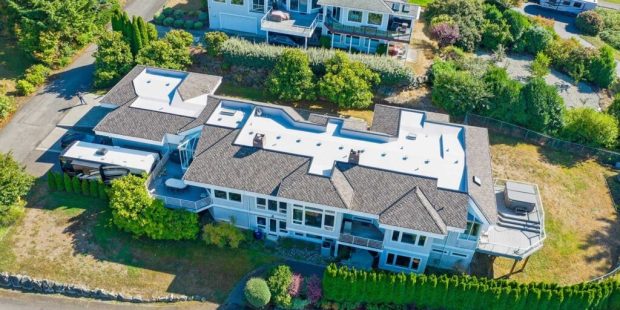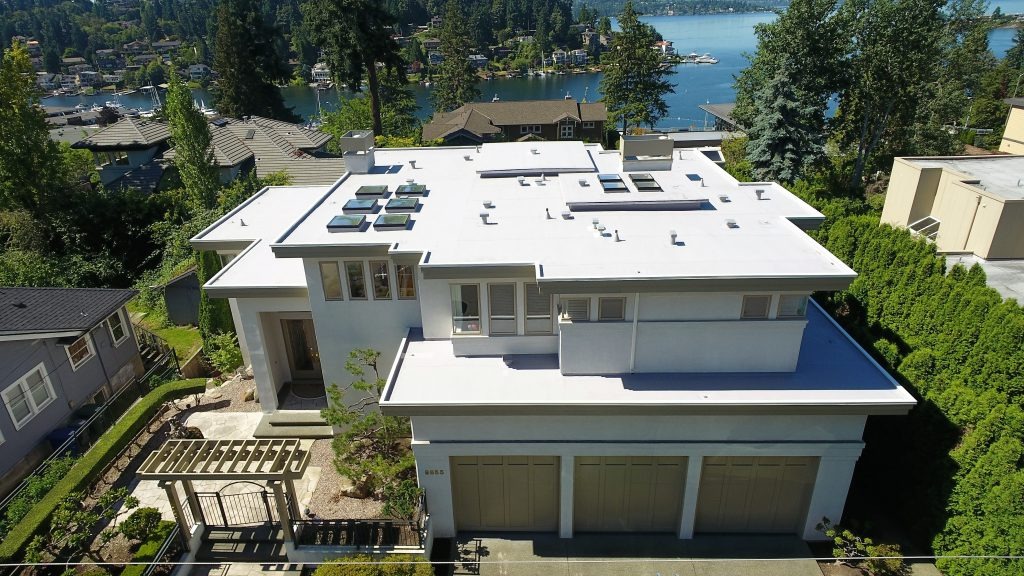
Picture this: It’s a rainy afternoon in 2025, and you’re settling into your home office when you notice water dripping from the ceiling. Panic sets in as you trace the source to your flat roof—a common feature in modern homes, commercial buildings, and urban apartments. Flat roofs offer sleek aesthetics and functional space, but they demand proactive care. Ignoring early warning signs can lead to costly structural damage, mold growth, and even safety hazards. If you’re dealing with persistent leaks, pooling water, or visible cracks, it might be time to consider flat roof replacement.
In this comprehensive guide, we’ll explore the key considerations for replacing a flat roof, dive into the latest 2025 cost insights, and help you make informed decisions. Whether you’re a homeowner weighing repair vs. replacement or a business owner planning ahead, understanding these elements ensures longevity and value for your property. Let’s break it down step by step, from spotting red flags to budgeting wisely.
What Is a Flat Roof and Why Consider Replacement?
Flat roofs, often slightly sloped for drainage, are popular for their versatility in contemporary architecture. They provide extra usable space for rooftop gardens, solar panels, or HVAC units, and they’re more energy-efficient in urban settings. However, unlike pitched roofs, flat roofs are prone to water accumulation, which accelerates wear and tear.
Common Types of Flat Roofs
Understanding the type of flat roof you have is crucial for replacement planning. The most prevalent options include:
- Built-Up Roofing (BUR): Layers of asphalt and felt, topped with gravel for UV protection. It’s durable but heavy.
- Single-Ply Membranes: Such as EPDM (rubber) or TPO (thermoplastic), which are lightweight, flexible, and easy to install.
- Modified Bitumen: Torch-applied asphalt sheets, offering good resistance to foot traffic.
- PVC or Metal Roofing: Premium choices for high-traffic or eco-conscious builds, with reflective properties to reduce cooling costs.
Each type influences replacement costs and suitability based on your climate and building use.
Average Lifespan of a Flat Roof
A well-maintained flat roof lasts 20-30 years, but factors like weather exposure and foot traffic can shorten this. In 2025, with increasing extreme weather events, many roofs installed in the early 2000s are reaching the end of their life. Regular inspections every six months can extend usability, but replacement becomes inevitable when repairs exceed 25% of a new roof’s cost.
Warning Signs That It’s Time for Flat Roof Replacement
Delaying replacement can escalate minor issues into major disasters. Homeowners and property managers should watch for these telltale indicators:
- Persistent Leaks or Water Stains: Even after patching, recurring drips signal underlying membrane failure.
- Pooling Water: Flat roofs should drain efficiently; stagnant puddles after rain indicate poor slope or clogged systems.
- Cracks, Blisters, or Bubbling: These often result from thermal expansion or poor installation, compromising waterproofing.
- Granule Loss or Alligatoring: On gravel or asphalt surfaces, this exposes the base layer to elements.
- Sagging or Structural Deformation: A sign of weakened support, potentially requiring more than just roofing work.
If you spot two or more of these, consult a professional immediately. Early intervention can prevent interior damage, which averages $5,000-$10,000 in repairs alone.
Key Considerations for Flat Roof Replacement
Replacing a flat roof isn’t a one-size-fits-all project. Thoughtful planning ensures durability, compliance with building codes, and alignment with your budget. Here’s what to prioritize.
Assessing Your Roof’s Condition
Start with a thorough inspection. Hire a certified roofer to evaluate membrane integrity, insulation, and drainage. In 2025, drone technology and thermal imaging make this process non-invasive and accurate. Consider local regulations—coastal areas may require wind-resistant materials, while snowy regions need enhanced insulation.
Selecting the Right Materials
Material choice balances cost, longevity, and performance. TPO remains a top pick in 2025 for its energy efficiency and recyclability, reflecting up to 80% of sunlight to lower AC bills. EPDM excels in cold climates, while metal options suit green builds with 50+ year warranties. Avoid outdated materials like coal tar if sustainability is a goal.
Environmental and Structural Factors
Climate plays a huge role: Hot, humid areas demand UV-resistant coatings, while freeze-thaw cycles require flexible membranes. Structurally, ensure your building can support the new roof’s weight—BUR is heavier than TPO. Also, factor in accessibility; urban high-rises may incur extra crane fees.
Hiring a Professional Contractor
Don’t skimp here. Look for contractors licensed in flat roof installations, with at least five years’ experience and positive reviews on platforms like Angi or BBB. Request multiple quotes, verify insurance, and check for warranties (aim for 20+ years). A reputable team will handle permits and cleanup, saving you headaches.
Understanding the Costs Involved in Flat Roof Replacement
Budgeting is a top concern for flat roof replacement. In 2025, national averages hover between $4 and $15 per square foot, translating to $10,000-$37,500 for a typical 2,500-square-foot commercial roof. Residential costs trend lower at $6,000-$20,000. These figures include materials and labor but exclude extras like permits ($200-$500).
Breakdown of Material Costs
Materials drive 40-60% of expenses:
| Material Type | Cost per Sq Ft (2025) | Pros | Cons |
| Built-Up Roofing (BUR) | $3-$5 | Affordable, fire-resistant | Heavy, labor-intensive |
| EPDM/TPO Single-Ply | $5-$8 | Easy install, energy-efficient | Less durable in hail |
| Modified Bitumen | $6-$9 | Flexible, quick application | Torch risks fire |
| PVC/Metal | $8-$15 | Long-lasting, eco-friendly | Higher upfront cost |
Opt for mid-range TPO for most projects to balance value.
Labor and Additional Expenses
Labor accounts for 30-50% ($2-$5 per sq ft), varying by location—expect 20% more in high-cost cities like New York. Add-ons include:
- Disposal of old materials: $500-$1,500
- Insulation upgrades: $1-$3 per sq ft
- Drainage improvements: $1,000-$3,000
Financing options like green loans can offset costs for energy-efficient choices.
Factors Influencing the Total Price
Roof size amplifies expenses—larger surfaces mean economies of scale but higher absolute costs. Accessibility (e.g., multi-story lifts) adds 10-20%. Market fluctuations in 2025, like rising asphalt prices due to supply chain issues, could nudge costs up 5-10%. Get quotes seasonally for potential savings.
The Step-by-Step Process of Flat Roof Replacement
Knowing the timeline eases anxiety. A standard 1,000 sq ft project takes 3-7 days.
- Inspection and Prep: Detailed assessment and securing permits (1-2 days).
- Removal: Stripping old layers safely, with debris hauled away.
- Surface Preparation: Cleaning, repairing decking, and adding vapor barriers.
- Installation: Laying new membrane, sealing seams, and integrating flashings.
- Final Touches: Testing drainage, applying coatings, and quality checks.
Post-install, schedule a walk-through to confirm satisfaction.
Pros and Cons of Flat Roof Replacement
Pros:
- Cost Savings Long-Term: A new roof cuts energy bills by 10-20% and avoids frequent repairs.
- Aesthetic and Functional Boost: Enables rooftop features like decks or green spaces.
- Increased Property Value: Upgrades can yield 60-70% ROI at resale.
Cons:
- Upfront Investment: Higher than sloped roofs for equivalent coverage.
- Weather Sensitivity: Installation must avoid rain, delaying schedules.
- Maintenance Needs: Annual checks are essential to prevent ponding.
Weighing these helps tailor the project to your needs.
Read More Also: How Visual Branding Shapes Indie Artists’ Careers Today
Wrapping Up: Invest in Your Roof’s Future Today
Flat roof replacement in 2025 is more than a fix—it’s a strategic upgrade for protection, efficiency, and peace of mind. By heeding warning signs, considering materials and costs thoughtfully, and partnering with experts, you’ll safeguard your investment against the elements. Remember, a proactive approach today prevents tomorrow’s regrets.
Ready to get started? Contact our certified roofing specialists for a free, no-obligation inspection and personalized quote. Visit our website or call [Your Phone Number] now—let’s make your flat roof last for decades!
Read More Also: How Can a Digital Marketing Agency
Frequently Asked Questions (FAQs)
How much does flat roof replacement cost in 2025?
Costs range from $4 to $15 per square foot, depending on materials and location. For a 2,000 sq ft roof, expect $8,000-$30,000 total.
When should I replace my flat roof instead of repairing it?
Replace if repairs exceed 25% of replacement cost or if you notice multiple signs like leaks and cracking. A pro inspection clarifies this.
What are the best materials for flat roof replacement?
TPO and EPDM are top choices for their durability and energy savings. Select based on your climate and budget.
How long does a flat roof replacement take?
Typically 3-7 days for most projects, weather permitting.
Can I finance a flat roof replacement?
Yes, many contractors offer payment plans, and energy-efficient options may qualify for rebates or loans.

